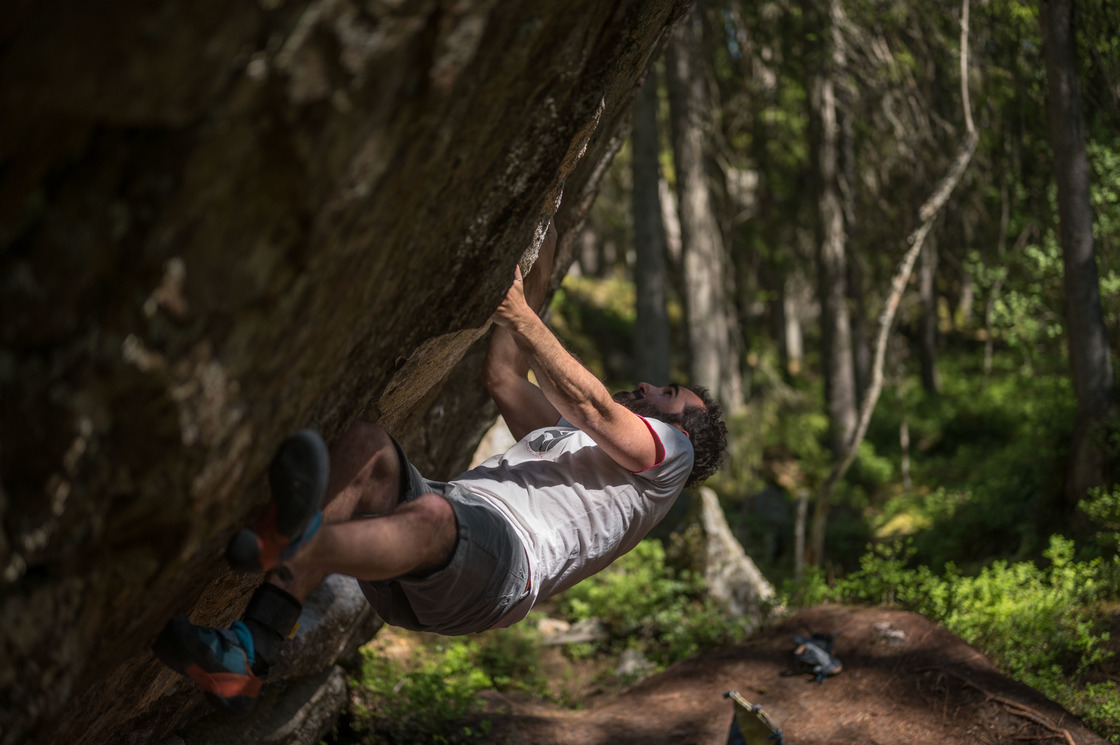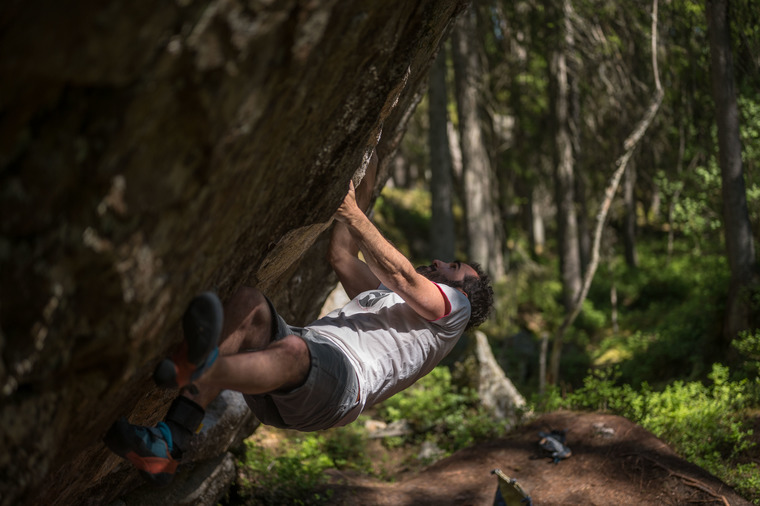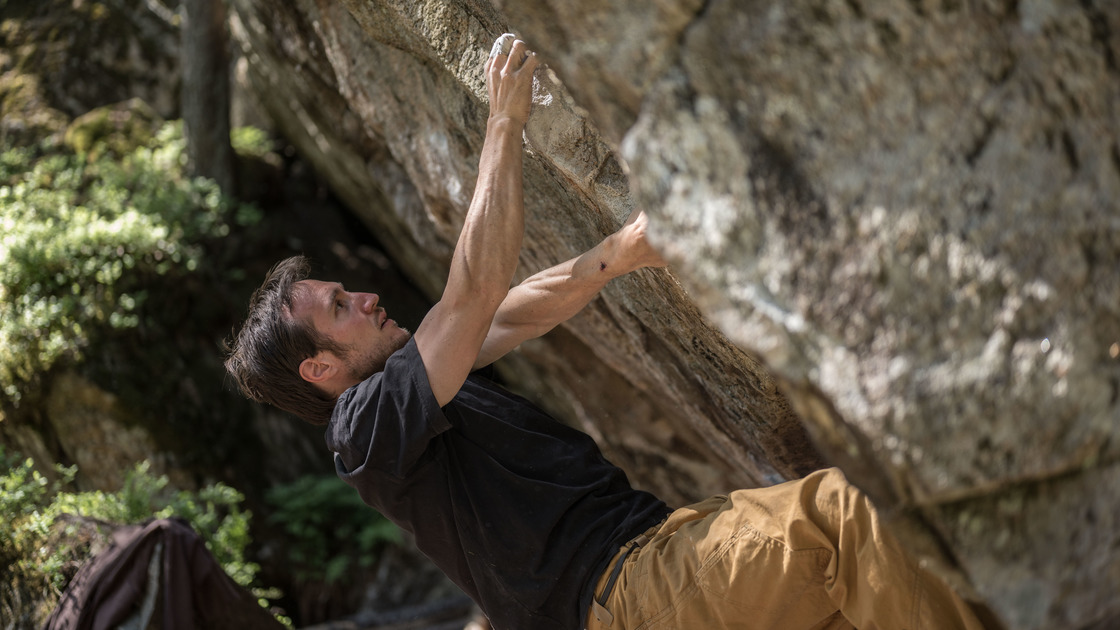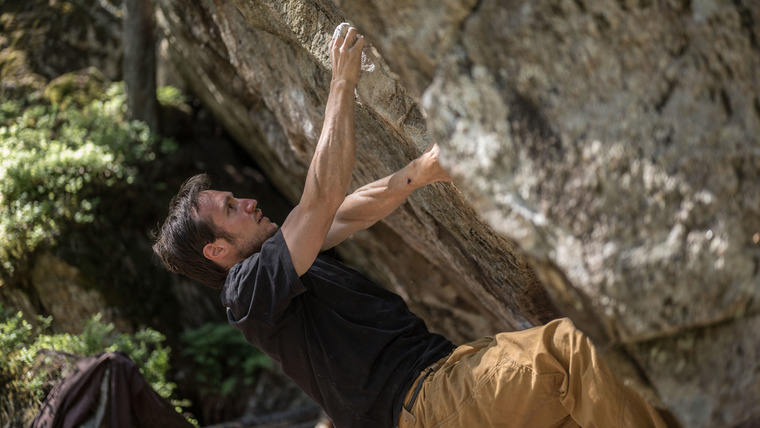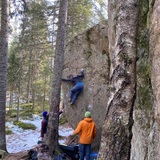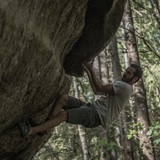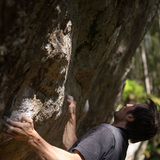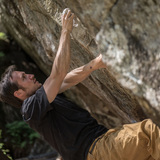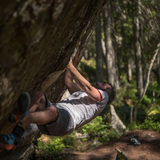Korketrekkern offers a large variety of boulders, easily accessible by foot or bike alone the graveled path from Østmarksetra. New walls are still being brushed out today, and the crag is very much alive with both classic and new boulders.
With the Deluxe and Katteputten crags to the north and Bukkeberget and Haraløkka to the south, Korketrekkern have a lot of neighboring crags that can offer new challenges with just a few minutes walk. The approach to Korketrekkern starts along Ulsrudvann, which a popular destination for swimming, barbecuing and camping, maybe something to consider after a long day of bouldering?
⭐ Bølerveggen is one of the closest walls from Østmarksetra, and features a great variety of both height and difficulty. On the right side of the wall out will find low, easier boulders, on the left you have one of the hardest boulders in the Østmarka area. If Mester Yoda (7C+/8A sit) is too hard, the classic Bølerbandittene (6C) is a classic worth trying. Another popular area is Korkedalen to the north shortly after walking along the gravel path. Both Futuramaveggen, Korkedalen and Tømmerveggen have a lot of nice boulders to try.
🌧️ There might be some seepage on the walls after longer periods of wet weather, but dries out relatively fast.
Østmarka is a nice destination all spring, summer, and autumn. If a lot of snow fell during the winter, it can take a while for the snow and ice to melt out, particularly in shaded areas, and can resulting in seepage for a long time through spring. It's also possible to climb during winter if you don't mind sub-zero temperatures, but wet snow/ice can make it impossible to clean the rocks (especially the top outs).
⛰️ Like the rest of Østmarka, Haraløkka also consists of ancient bedrock, mostly gneiss, a metamorphic type of rock. You can encounter many types of textures and patterns in the area, like quartz crystal pockets, big boulders of granite, and rocks speckled with garnets.
Some of the less popular boulders have not been maintained in the last few years, and may be overgrown. The topo images are from 2020, so keep that in mind and bring a steel brush if it looks like it needs some maintenance.
